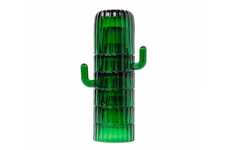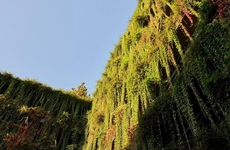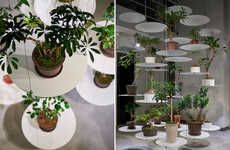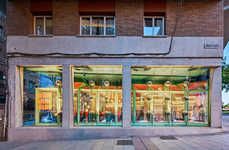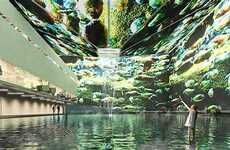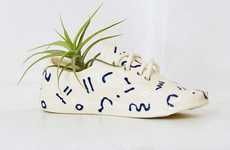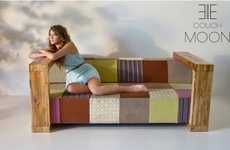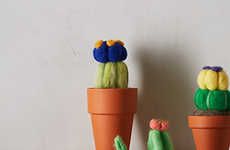
This Brussels Boutique Uses Cactus Plants Indoors as Railings
Laura McQuarrie — September 18, 2013 — Art & Design
References: siblingsfactory & dezeen
Cactus plants indoors are not an unusual thing to find, but JDS Architects used them in an unconventional way in its design of this 'Siblingsfactory' shop in Brussels.
The interior features many conventional materials like wood and concrete, but one of the most captivating parts of the design is that the team used tall cactus plants to line the perimeter of the boutique's second floor instead of a traditional metal or glass railing. Unlike a normal railing, people cannot lean or grab onto it without painful consequences.
Hopefully this quirky design will encourage people to keep their distance from these cactus-made railings and prevent anyone from falling to the first floor. However dangerous it may seem, this novel design will definitely brings some interest and foot traffic to the Siblingsfactory boutique.
The interior features many conventional materials like wood and concrete, but one of the most captivating parts of the design is that the team used tall cactus plants to line the perimeter of the boutique's second floor instead of a traditional metal or glass railing. Unlike a normal railing, people cannot lean or grab onto it without painful consequences.
Hopefully this quirky design will encourage people to keep their distance from these cactus-made railings and prevent anyone from falling to the first floor. However dangerous it may seem, this novel design will definitely brings some interest and foot traffic to the Siblingsfactory boutique.
Trend Themes
1. Indoor Plant Design - Exploring unconventional uses of plants in indoor spaces can create unique and eye-catching designs.
2. Alternative Railings - Replacing traditional metal or glass railings with unconventional materials can add an element of surprise and innovation to architectural designs.
3. Safety-inspired Design - Designing spaces that incorporate safety measures in unexpected ways can attract attention and create an immersive experience.
Industry Implications
1. Interior Design - The use of unconventional materials and designs in interior spaces presents opportunities for creativity and differentiation in the industry.
2. Architecture - Exploring alternative railing options can offer architects new avenues for integrating nature and design elements into their projects.
3. Retail - Incorporating unique and visually captivating designs can help retail establishments attract customers and create a memorable shopping experience.
4.7
Score
Popularity
Activity
Freshness




